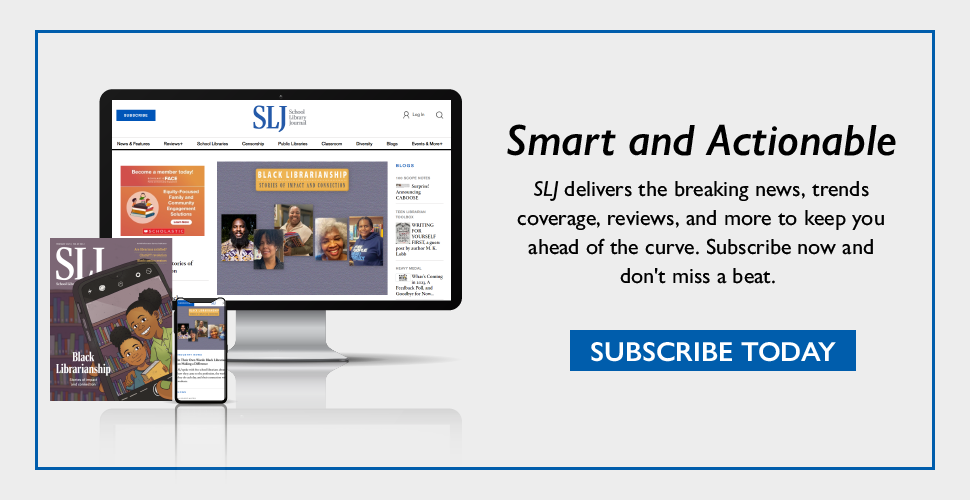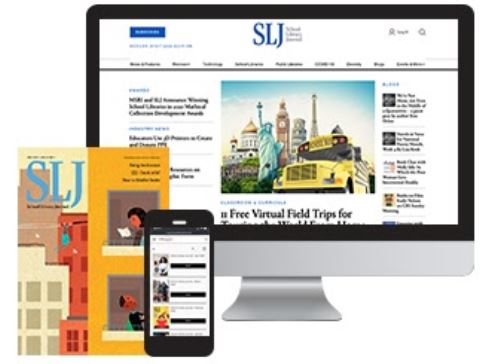#KidLitWomen Seeks Solutions to Gender Inequity in Children’s Publishing
It was time to stop complaining and do something about gender inequity in children's publishing, so #kidlitwomen was born to highlight issues and offer solutions every day of Women's History Month.

Illustration by Grace Lin
It is a conversation the Newbery Honor author of Where the Mountain Meets the Moon has had many times before in small groups of female writers and illustrators. This time, she and Blumenthal thought it was worth putting it out there to a wider industry group, so they started a whiteboard discussion on kindlingwords.org. As great as it was to further the conversation with the 15 or so people who joined, Lin became frustrated again. “We’ve been having this conversation for years and years,” she says. “Nothing has ever changed. I want this to be solution-based discussion: What’s our problem? What can we do to change it?” She sent out a note asking what they could do to take the conversation out of these small groups and try to bring about broader change. Author Meg Medina suggested they use Women’s History Month and Twitter to “bring the conversation out into the open.” Soon, #kidlitwomen was born, aimed at “calling attention to the gender inequities of the children’s literature community, uplifting those who have not received their due, and finding solutions to reach equality for all.” The original plan was for a Facebook page with one post each month from women in the industry addressing an area of gender inequity. Lin had one rule: the writers of the posts had to either suggest a solution or ask others for one. They put up a calendar, and people signed up with their topic. “I was hoping for 30 [people and posts] and it just blew up,” says Lin. “We have about 500 people in the Facebook group.” At least three posts are scheduled each day for March now, and the posts are pushed out on Twitter with the #kidlitwomen hashtag. The content is meant to impact the industry and reach beyond it.
Photo by Alan Bradley
“I hope they all follow along,” Lin says of the greater public. “The whole point of the project is we need to talk about this in public and get other people to weigh in and get other people’s opinion. I’m hoping that people start showing up with solutions.” When the Facebook page devolves back to a cycle of conversation and complaint rather than suggestions for solutions, Lin goes in and redirects. The month began with a post on gender inequity in the books kids read and the expectations put on young readers at school and at home. It was written by Shannon Hale, author of Real Friends and the “Princess Academy” series. “I thought was a very, very important piece,” says Lin. “Almost from birth we shame boys from liking ‘girly’ things and ‘girly’ things become something to be despised. That is the foundation of all our problems. Right from the beginning, the things that are female are devalued. “What I’d like people outside of our community to realize is that this starts young. It starts with the books you read. It starts with what books we chose for our sons and daughters and our friends.” Later posts have talked about the gender inequity in Caldecott and Coretta Scott King Award winners, fair pay, and the “trouble with chicklit.” Some solutions are popping up, too. The lack of female Caldecott winners and honorees was striking to many. What can be done to amplify the work of these women? A Pinterest board of women’s children’s book illustrators was created by author and illustrator Joyce Wan and can now be a resource for anyone looking for conference speakers, book recommendations, or illustrators to hire, according to Lin. Everyone has their “pet passion" among the many issues women face in the industry, and Lin wants all voices and issues to be heard. Her personal focus is the intersectionality between race and feminism. “If you look at the Caldecott, you realize women have it tough,” she says. “If you look at the Coretta Scott King, you realize, oh, women of color have it even tougher.” Her solution at the moment is to try to keep this topic at the forefront of the gender inequity conversation and to attempt to recruit more women of color into the group to be part of the conversation and to write posts. “Everybody’s busy, that’s the problem,” Lin says. “You just do the best you can.” The project hasn't gone completely smoothly as conversations and posts bring up these additional issues within the greater issue of gender inequity. When one woman wanted to discuss ageism, for example, another commented that they should not "split hairs." Lin wants all voices to be heard. Not everyone is going to agree, she acknowledges. The issues may be complicated, but the goal is clear–and achieving it requires total inclusion. "Even the women that infuriate us with their inner misogyny, who talk about the hot men of literature or call these guys ‘yummy,’ even though they infuriate us, they are still our sisters," she says. "We’re not going to help anybody by getting angry at them or being disgusted by them. Our only hope is to show them how it demeans them; it demeans the men; it demeans our whole life’s work. I’m sure these women who say these things love what they do. So our only hope is to show them it demeans what they love and get them on our side." While this project did not develop because of the recent sexual harassment accusations within the industry, it is not separate from it. “We’ve already had a couple of articles about sexual harassment, and that’s not something I want to shy away from,” Lin says. “I think there is definitely intersection of that. This is all a matter of power, right? Somehow there is an imbalance of power, even in our women-dominated industry. This power given to men can be really abused. “Sometimes, it’s abused in small ways. Sometimes, it’s not abused by them personally, but it’s giving them advantages they don’t even know about. And sometimes it’s out-and-out abuse like the harassment issue. This whole thing is about showing how the power is imbalanced—and what should we do to bring back that balance?”Add Comment :-
RELATED
RECOMMENDED
CAREERS
The job outlook in 2030: Librarians will be in demand
CAREERS
The job outlook in 2030: Librarians will be in demand
ALREADY A SUBSCRIBER? LOG IN
We are currently offering this content for free. Sign up now to activate your personal profile, where you can save articles for future viewing







